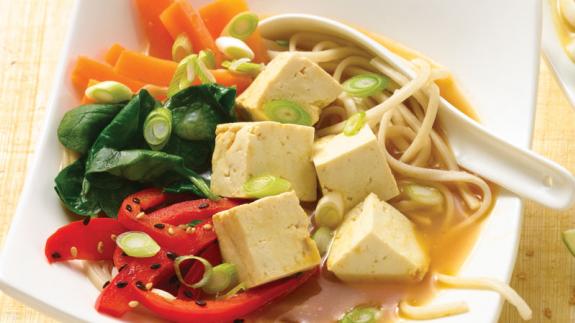Archives
-
Greek spices, olives, and feta cheese give this classic comfort food a Mediterranean twist.
-
This lean protein- and fiber-packed salad will satisfy you for hours.
-
Gluten-FreeQuick and EasyRecipesVegetarianVegetarian & Vegan
Spaghetti Squash Primavera
December 22, 2011This dish tastes just as comforting as the original, but without pasta’s calories and carbs.
-
This bright red latke is a festive variation of the traditional potato latke. Beets grate nicely and form the perfect consistency for a latke. Be careful though: Beets produce lots of juice when grated, so be sure to wear gloves and an apron to prevent stains. This recipe is also a wonderful way to introduce this healthy vegetable to children.
-
The wonderfully spicy-hot jam condiment lifts the traditional latke taste to a new level.…
-
Roasted chiles lend a smoky deliciousness to this updated classic. To roast them yourself, turn with tongs over a gas or charcoal grill until blackened on all sides (or use a broiler, turning occasionally to blacken all sides). When cool, slip off and discard blackened skins.
-
Spicy tomatillos add a nice heat to the sweet latkes.
-
Fibrous but tender spaghetti squash makes a perfect base for this unusual latke recipe.
-
These doggie or human goodies are easy to make and taste delicious. The cranberries also make them well suited to pets who are prone to urinary tract infections.
